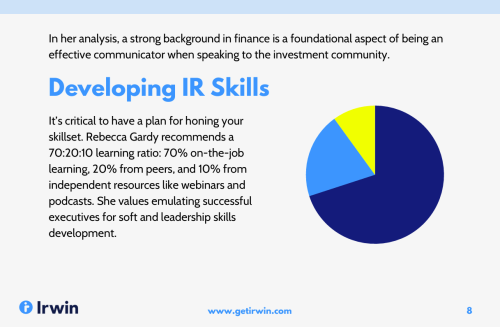Hot on the heels of its company’s recent $38 mn capital raise, Darrell Heaps, CEO at Q4, gives IR Magazine his insight into the current challenges of shareholder targeting, and his views on what the future will bring for this fundamental IR activity.
What are the main challenges around shareholder targeting today?
If we take a look at today’s macro environment there are two main issues affecting the current landscape. This first is regulatory change – Mifid II, to be specific. There’s an overall decline in the number of sell-side brokers serving the broader corporate markets. Brokers are still helping larger companies, but there is also a far greater responsibility on IR teams to identify and connect with targets themselves. This is particularly visible in Europe, but it is also affecting the US and North America in general.
The second is the evolving nature of today’s investor, which is making the traditional method of simply matching, for example, a growth stock with a growth investor, harder to achieve. Markets and investors have both evolved and, as a result, how investors are classified on traditional databases and how they actually behave are not always in sync.
With this in mind, how can IR teams adapt for the future?
IR teams need to be focusing on doing all they can to identify potential investors that are a good match on a number of levels, not just ones based on broad style classifications or peer analysis. Technology offers a tremendous opportunity for a more scientific approach and to deliver results that offer a truer fit. For example, examining how a particular fund or fund manager behaves in the market when the economic environment or company fundamentals change offers invaluable insights.
By using a machine-learning and probability approach to scoring, this fund’s activity can be married to a stock’s fundamentals and trading performance, and further assessed against different factors such as how much stock is likely to be bought, how long it’s likely to be held, and so on, [allowing] IR teams to not only spend their time on those investors that are the best fit, but also those that are highly likely to take (or increase) their position.
Is this new technology really necessary to achieve good targeting outcomes?
There’s no doubt that technology, such as machine learning, offers a tremendous opportunity to elevate shareholder targeting to a whole new level. In basic terms, there is an immense amount of data – both from a trading and a funding perspective – that humans simply don’t have the capacity to process, and I’m talking millions of data points. It’s an exciting time, and this marriage of big data and machine learning is opening up a whole new world of new types of analysis previously not achievable. Technology is basically making it possible to significantly open up the targeting pool, using a system that generates unique and stock-specific suggestions, so companies aren’t relying on the same list of names being put forward time after time.
What about good old-fashioned human methods? Are they redundant?
Not at all: there’s no reason why IR teams can’t have the best of both worlds. Our approach is to hire only the most talented analysts in the market and our model is to combine both ‘man and machine’ so that our analysts have the latest in insights and analytics to arm themselves with all the information they need to deliver the best outcomes.
Finally, it’s also worth remembering that targeting is only the starting point. If you consider the process as a sales funnel, targeting sits right at the top of what is often a fairly lengthy process toward the ultimate goal of getting investors to take a position.










